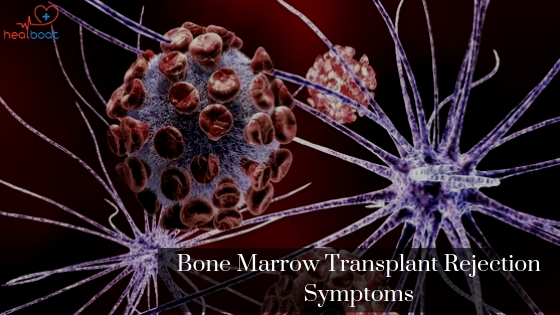Bone Marrow Transplant Rejection Symptoms
Stem cell transplant is a major surgical procedure in which the diseased bone marrow of the patient is replaced with the healthy bone marrow of the donor. Due to the severity of the procedure there are multiple complications associated with it. One such major complication is bone marrow rejection.
There are two kinds of bone marrow transplant treatment that might be performed to treat the damaged bone marrow of the person namely autologous transplant and the analogous transplant. In the autologous bone marrow transplant the damaged bone of the patient is replaced with his own healthy bone marrow while in case of the allogeneic transplant the bone marrow of the donor is taken. In case of allogeneic transplant there is always a possibility for the rejection of the bone marrow also called the graft versus host disease.
What is bone marrow rejection?
Bone marrow rejection is a complication of the bone marrow transplant that is also known as the Graft Versus host disease. In this condition the blood cells that are developed from the bone marrow of the donor treats the blood cells in your body as foreign cells and begins to attack them. There are majorly two kind of bone marrow rejection as explained below-
- Acute graft versus host disease (aGvHD) - It is the kind of bone marrow rejection in which the donor cells recognize the cells of the patient as foreign that leads to the immune response against the tissues and organs of the patient. The main bone marrow rejection reasons is the donor/ recipient HLA (Human Leukocyte Antigen) match in which there is a significant difference between the donor and the recipient.
- Chronic graft versus host disease (cGvHD) - It is the later stage of the acute graft versus host condition. The risk of developing this condition is increased in the patient who already has GVHD, is of old age, has received bone marrow from an HLA mismatched donor or from an HLA matched unrelated donor.

What are the symptoms of bone marrow rejection?
After the bone marrow transplant the patient may experience many changes and uneasiness for some time. Having some symptoms kind of symptoms is absolutely normal and they may go away with time. However, the presence of some particular signs may be an indication of bone marrow rejection and may require the immediate attention. Here is the list of bone marrow rejection symptoms-
- Rashes on the skin or redness of the skin.
- Yellowish skin or discoloration.
- Increased redness or irritation in eyes.
- Nausea, vomiting, diarrhea or abdominal cramping.
- Fatigue, muscle pain or the pain.
- Shortness of breath.
- Dry mouth or unreasonable weight loss.
What is the treatment for graft versus host disease?
It is important to take due care and consult the doctor as soon as possible in order to treat and manage the rejection in an effective manner. Here are treatment options for both the acute and chronic graft versus host disease-
- Acute Graft Versus Host disease- This condition can be successfully treated with the increased use of immunosuppression that is given to the patient in the form of oral or intravenous drugs.
- Chronic graft versus host disease treated- To treat this condition the long term immunosuppressive medications are used by the doctors. Further the medicines to help in managing the impacts of the rejection can be prescribed.
Also Read: